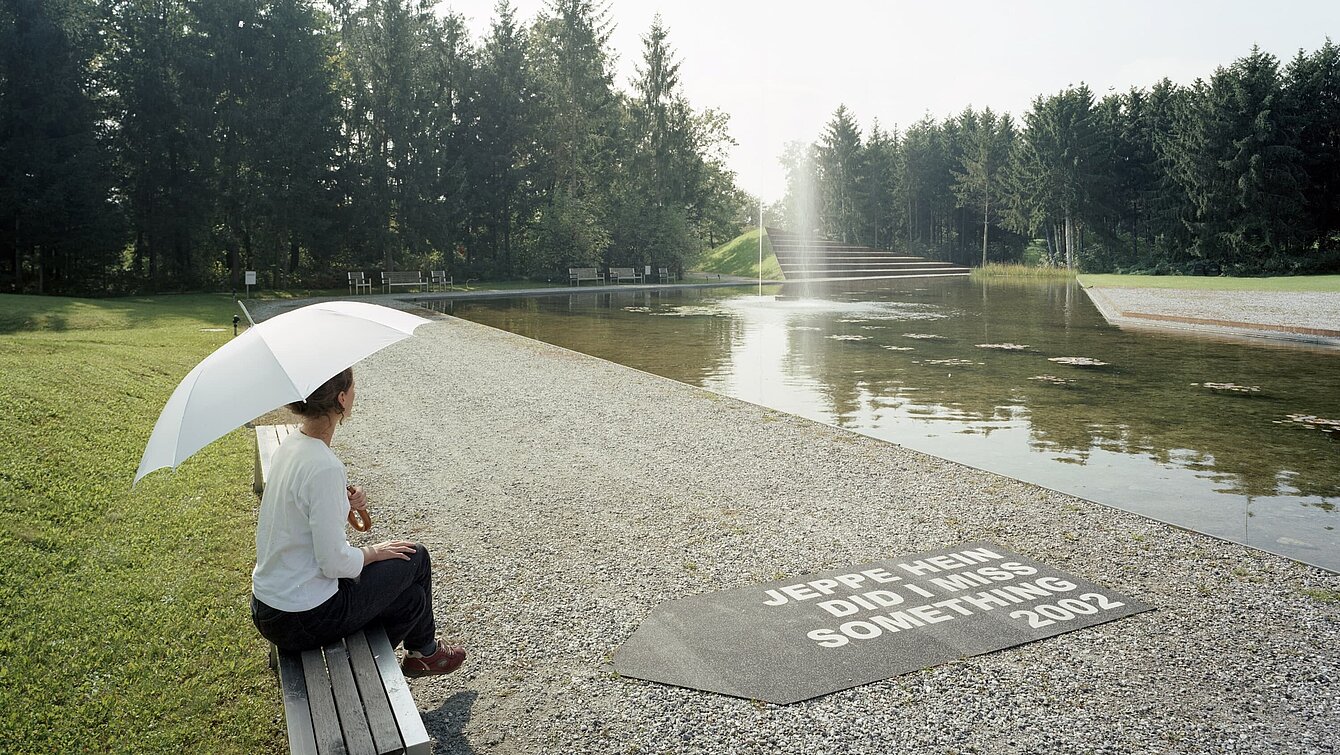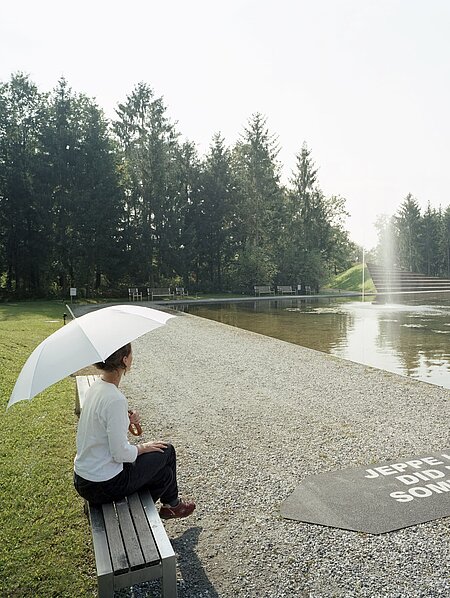Hein’s sculptures are always directly linked with physicality and movement. If you sit down on the bench that has been chosen to serve as the trigger, a fountain will rise from the middle of the lily pond—a jet of water that shoots high above the treetops. This means that the viewer becomes an essential part of the sculpture, since their action is needed to make the work of art visible in the first place and, a few moments later, audible too. The jet is a reference to masculine forms of political power and the underlying aggression that is associated with them. The viewer can, however, decide to interrupt the jet simply by standing up— giving this aspect of the work an ironic humour at the same time.
Did I miss something, Exemplar 1/3
Jeppe Hein, 2002


Image Credits
Author
Elisabeth Fiedler, Kurztext adaptiert von Lisa Schantl und Lukas Sperlich
Location on map
Owner
Österreichischer Skulpturenpark Privatstiftung
Artist biography
Jeppe Hein
Show all
About the sculpture
Jeppe Hein’s volatile sculptures are directly connected with physicality and movement. In their reference to spatial relations and most of all in the public space, the concept of sculpture is scrutinised in its capability to represent by means of the game involving absence and presence. The relationship between physical and psychological experience is enabled with a simple and immediate dialogue; it plays with the reflection about static pre-conditions and the transfer thereof into a flexible and dynamic space.
The order established by Hein becomes transparent without the possibility of being researched or influenced. We are exposed to this order, which, once experienced, becomes a secret order that one likes to repeat for pleasure. A minimal shift of site causes here a frontier crossing toward a new and unexpected experience that as a reality, after leaving behind the one location will only exist virtually or in imagination.
Thus Hein chooses, as a trigger for making his work visible, an artificial water area for the Skulpturenpark, around which several benches for resting are placed. Intended consciously as an interaction, and sub-consciously as a perception disorder, he fathoms the relationship between designing and eliminating form. Upon sitting down on a certain bench, in the middle of the basin, a water fountain is created which reaches higher than the treetops. It presents itself as visual and acoustic work of art, playfully including the visitor as the trigger and controller.
The work is published with the title “Did I Miss Something”, following Yves Klein as “immaterial architecture” and referring to baroque garden design. At the same time it refers to some kind of political-male power concept, whereby latent aggression with its simultaneous beauty, and by means of the potentially spontaneous de-materialisation of the work, highlights Hein’s ironic-humorous approach.



















